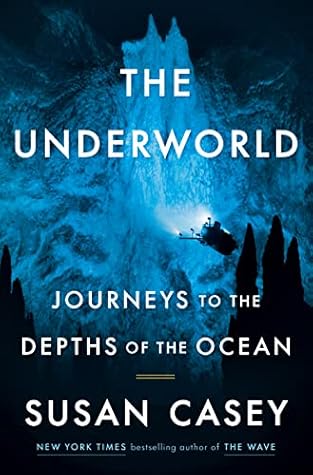More on this book
Community
Kindle Notes & Highlights
HURL’s décor could be described as man-cave chic, minus the chic.
But the undersea stillness turned out to be ominous. We now know that Cascadia’s megathrust fault isn’t moving because it’s locked along virtually its entire length: every bit of the Juan de Fuca plate’s mighty force is rammed against the continent. The Cascadia subduction zone is all in. That means one day it will be all out.
Whenever instruments were placed in the observatory, it wasn’t long before marine life moved in. These were homes, hiding spots, surfaces to cling onto. Any perch gives the animals an advantage: it helps them catch food drifting by in the currents. Rose-pink anemones, electric-yellow sea stars, and lilac-purple octopuses had staked out the junction boxes like a luxury subdivision. At another site, a platform had been colonized by so many fluffy white anemones it was nicknamed “The Sheep.”
This unseen realm is one of the earth’s oldest and most expansive biomes—and one that’s largely impervious to surface trauma. We could nuke ourselves, or get walloped by a comet, or die off in any number of messy ways, and the deep biosphere would carry on.
It’s hard to know how drastically the ocean is changing if you don’t know what it’s up to in the first place. Since 1970, it has gulped down 93 percent of the excess heat and 30 percent of the carbon dioxide we’ve generated from burning fossil fuels—an extraordinary burden. As a result, it’s becoming warmer, more acidic, and less oxygen-rich. The state of ecological balance that we’re dependent on isn’t permanent: if we perturb it enough, the ocean could make things terminally unpleasant for us.
You couldn’t look at the black smoker and think about a work deadline or that you needed to make a dentist appointment or how your pants felt tight. You could only be immersed in its presence; it admitted nothing mundane. Human thoughts, beliefs, involvement: none of these were required in this alternate world. “It’s just going all the time,” Kelley said. “It doesn’t care that we’re here
In some areas like the Mariana Trench, the depths had been charted—with room for improvement. But in the Indian Ocean, no one had identified the deepest spot; and in the Southern Ocean, the bathymetry of the South Sandwich Trench was largely unknown. Before Vescovo could dive to the Five Deeps, first he had to find them.
In the deep, humanity can’t even pretend to be in charge. Of course we’re not in charge of space, either, but exploring upward gives us the illusion of expansion, as though we’re conquering territory, extending our ever-acquisitive reach. In this mindset, to go inward, into the abyss, is to be stuck with what we already have.
restless curiosity is my default setting,
To get a sense of how much deep-sea action goes on in the far north, consider the Denmark Strait Cataract, located between Greenland and Iceland. It’s the planet’s tallest, mightiest waterfall, 11,500 feet high and a hundred miles wide, pumping five million cubic meters of water per second—and it lies two thousand feet beneath the ocean’s surface. Also, the Arctic is an undersea obstacle course of volcanic terrain. Peaks, ridges, valleys, faults, cliffs, shelves, vents: if the northern depths were music, they would be a live album by Nine Inch Nails.
The idea of commercially fishing the twilight zone is off-the-charts stupid. That doesn’t mean we won’t do it.
The abyssal sediments (and the nodules themselves) are teeming with extraordinary life. Recently, researchers analyzed genetic sequences from four hundred and eighteen deep-sea sediment samples and identified nearly one hundred thousand DNA variants, 60 percent of which belonged to seafloor-dwelling critters that didn’t fit into any known taxonomic group. These weren’t merely new species—they represented entirely new branches on the tree of life.
In 2017, scientists reeled in disbelief when the ISA granted Poland an exploration contract for hydrothermal vents along the Mid-Atlantic Ridge—in an area that includes Lost City.
“It’s an old saw in the media that more people have been to the moon than to the bottom of the Mariana Trench,” Vescovo had pointed out. “Well, not anymore.”
The deep was still largely out of sight and out of mind—but with each awesome discovery more people’s curiosity was piqued, and fewer perceived it in that old, tired way, as a hellscape populated by monsters. Or a barren wasteland that has nothing to do with us.


